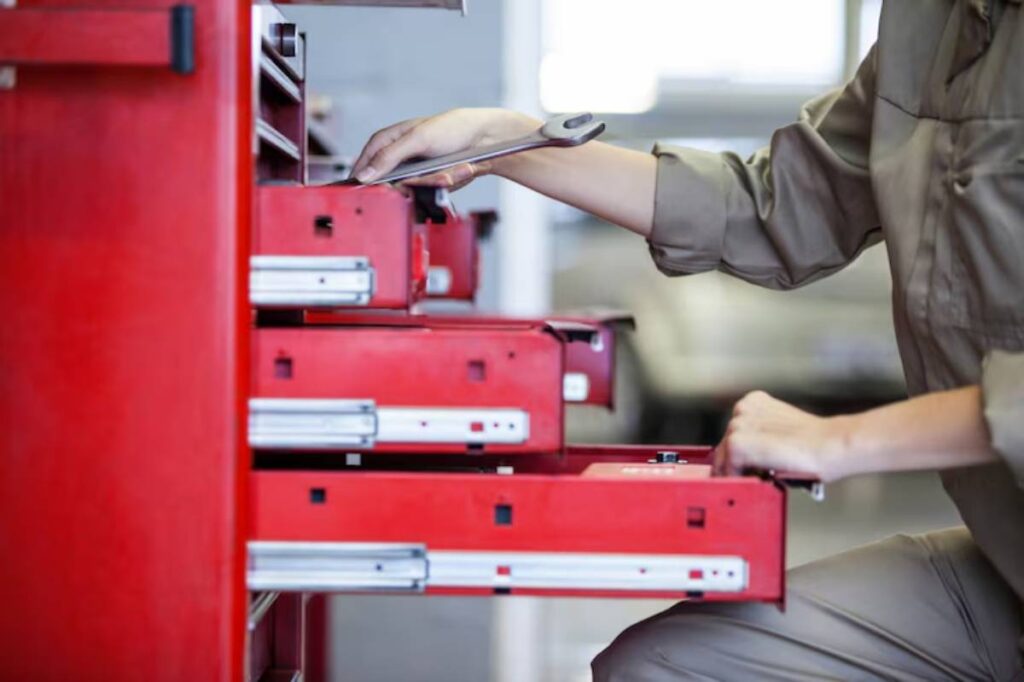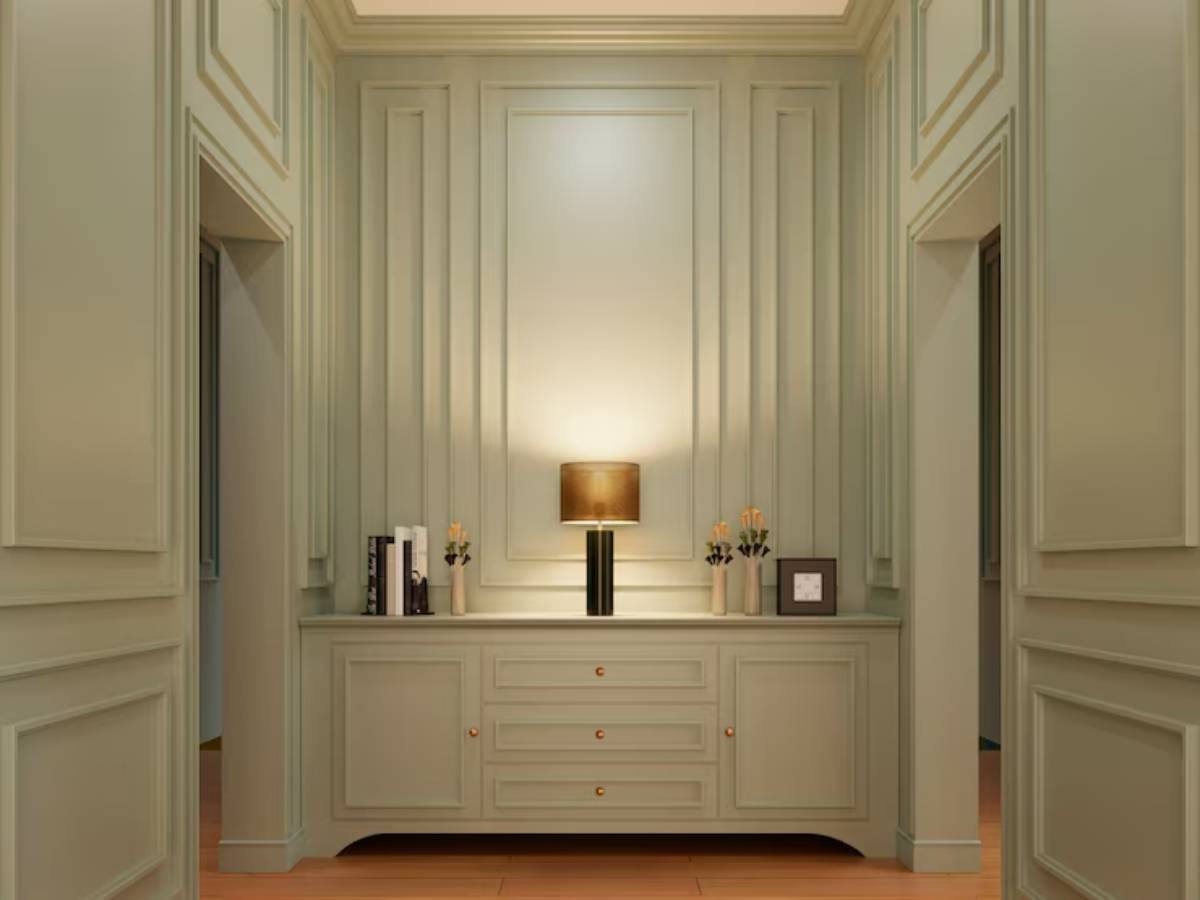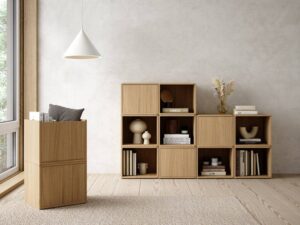The Interior Design Blog

Hidden Drawers You Didn’t Know You Could Install
Every home has its fair share of clutter, but what if your cabinetry could quietly store it all away, without sacrificing an ounce of floor space?
Welcome to the world of hidden drawers: sleek, secret compartments that transform everyday cabinets into multitasking marvels.
Hidden drawers aren’t just clever—they’re lifesavers in tiny kitchens, minimalist homes, and family flats where every centimetre counts. From toe-kick storage to pull-outs behind false panels, these smart installations offer convenience with a side of intrigue.
Let’s unpack how hidden kitchen drawers can revolutionise how you store, access, and design.
What Counts as a Hidden Drawer?

A hidden drawer is any storage compartment that’s built discreetly into cabinetry, behind panels, under overhangs, or inside larger drawers. The idea is subtlety—you can’t spot them at first glance.
They often sit in:
- Toe-kick spaces beneath cabinets
- Behind false drawer fronts
- Inside deep drawers as secondary compartments
- Under benches or breakfast bars
- Built into islands or plinths
They work best when integrated at the design phase, but many can also be retrofitted into existing kitchens.
The Best Places to Hide Extra Storage
Under the Toe Kick
That small space where your cabinet meets the floor? It’s hiding potential. Toe-kick drawers can store baking sheets, trays, placemats, or even kids’ step stools.
These slim drawers are easy to miss but incredibly useful, especially for items you don’t use daily.
Behind False Panels
Ever opened a drawer that wasn’t real? Some fronts that appear purely decorative can be turned into functioning pull-outs.
They’re perfect for:
- Spice racks
- Tea bag organisers
- Stationery or gadget cords
Use soft-close hinges and a magnetic latch for a clean, satisfying feel.
Inside Deep Drawers
Deep pot drawers often become chaotic black holes. Add a hidden second drawer inside to sort smaller items like utensils, cutting boards, or dish towels.
This layering system creates order and removes the need for bulky dividers.
Clever Uses That Go Beyond the Kitchen
Hidden drawers aren’t limited to where you cook.
They shine in any room:
- Bathrooms: Tuck a thin drawer into your vanity’s plinth for first-aid items.
- Living rooms: Use side tables with secret compartments to stash remotes and charging cables.
- Bedrooms: Install drawers behind wardrobe kickboards for seasonal accessories.
- Hallways: Store shoes in drawers beneath entryway benches.
And if you’re already using smart storage features, consider combining them with solutions like decorative storage that doubles as home decor.
Why Hidden Drawers Are Game-Changers
Beyond aesthetics, hidden drawers bring serious functional wins:
- More storage without extra bulk
- Streamlined, minimal design look
- Safe, tucked-away zones for valuables
- Custom organisation based on your habits
- Accessibility enhancements for kids or limited mobility
You don’t need a kitchen remodel to feel the impact. Even adding one drawer can improve daily routines—from morning coffee stations to spice-grabbing at dinnertime.
Smart Design Tips for Seamless Integration
Think About Placement
Start by mapping your daily flow. Do you constantly search for baking trays? Put a toe-kick drawer near the oven. Stashing tea towels? Slide one near the sink.
Use Matching Fronts
To keep the hidden nature intact, use drawer fronts that match your existing cabinetry—handleless or push-to-open styles work best.
Keep Weight in Mind
Hidden drawers tend to be smaller and lighter. Use them for linens, shallow goods, or small accessories—not heavy cookware.
Materials & Hardware That Last
Just because they’re hidden doesn’t mean they should be flimsy.
Choose high-quality fittings:
- Steel gliders for smooth operation
- Plywood or MDF boxes with a moisture-resistant finish
- Soft-close or push-release mechanisms
- Anti-slip drawer liners for delicate items
Avoid particleboard or lightweight plastic, especially in high-moisture areas like kitchens and bathrooms.
Unexpected Hidden Drawer Ideas
- Plinth drawers for pet supplies: Keep treats and leashes near the kitchen door.
- Drawer-in-drawer cutlery dividers: Neatly tuck away everyday forks and knives.
- Island ends with book storage: Great for cookbooks or tablets.
- Laundry pull-outs in the kitchen: Store dish rags and laundry bags in separate compartments.
One surprising upgrade? Use a drawer with a built-in step for children—great for family homes where kids help with cooking or washing up.
Planning & Installing Hidden Drawers
Retrofits vs. New Builds
Hidden drawers are easiest to include when designing a new kitchen, but retrofitting is often possible too—especially for toe-kick or internal add-ons.
Work With a Joiner
A skilled joiner can customise hidden storage that doesn’t interfere with existing structure. For retrofits, they’ll measure the unused gaps and suggest creative insert options.
DIY Add-Ons
If you’re handy, try:
- Flat-pack toe-kick kits
- Drawer organisers with hidden compartments
- Under-shelf baskets for false drawer fronts
Many of these are affordable, starting from £20 and up.
How to Keep Them Organised
Even secret compartments need structure:
- Use labelled baskets or jars inside drawers
- Add foam or felt dividers for tools and utensils
- Maintain a “category per drawer” rule to avoid mess
Consider lighting options like motion-sensor LED strips for drawers that are hard to see into.
What to Store in Your Hidden Kitchen Drawers

Depending on location and depth, hidden drawers can house:
- Serving trays and platters
- Spices and condiments
- Wine bottles or bar tools
- Knife blocks or utensil rolls
- Charging stations for phones or tablets
- Pet food and feeding tools
For kitchens with vertical challenges, you might even pair hidden drawers with overhead storage like ceiling-mounted racks to free up floor space entirely.
Conclusion: Unlock the Storage Potential You Didn’t Know You Had
Hidden drawers are the unsung heroes of modern cabinetry. They tuck away everyday clutter, elevate your kitchen’s usability, and maintain a seamless visual flow.
Whether you’re building from scratch or tweaking what you’ve got, think beyond the obvious. Toe-kick trays, false fronts, and clever drawer layering offer more function with less footprint.
So—what secrets could your kitchen be hiding? Install a hidden drawer or two, and enjoy a cleaner, more functional space where everything has its place… and no one else has to know.









